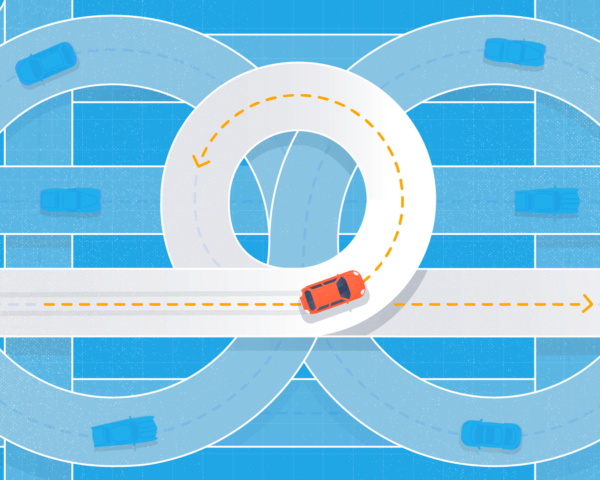5 ways to demystify the magic of high-performing teams
Over a decade of working with all kinds of teams, I’ve found the best of the best possess these “team alchemical elements.”
Alchemy is the magical process of transforming something ordinary (lead) into something coveted (gold). Interpersonal alchemy is how I like to think of turning an ordinary team into a high-performing team – one that nurtures connection, belonging, trust, speed, and momentum.
Those of us who want to drive meaningful outcomes forward strive to be part of a high-performing team. But the reality is that it’s a pretty rare occurrence. Atlassian’s most recent State of Teams report found that only 13 percent of teams have the elements needed to be high performing. That’s down from 17 percent last year.
Alchemical elements of high-performing teams
So what should you look for when evaluating if your team is high-performing? Over a decade of working with teams of all sizes, across industries and geographies, I’ve found the best of the best possess these “team alchemical elements.”
A clear purpose creates autonomy
This one is simple: When teams understand why they exist and what they are trying to accomplish, they are willing to take control and own how they solve the problems and meet the goals at hand.
Decentralized decision-making fuels empowerment
When we’re explicit about which decisions the team makes and who will make them, the team doesn’t just feel empowered – they take the power and the accountability associated with it.
When I think of high-performing teams with absolute clarity around and dedication to the team mission, I think of the U.S. Navy SEALs. In their book Extreme Ownership, retired SEALs Jocko Willink and Leif Babin discuss how two principles – establishing a resolute belief in the mission and decentralizing command – are critical leadership principles on the battlefield.
High trust with psychological safety accelerates team cohesion
When team members trust each other and feel safe bringing up issues and concerns to their team, relationships between individuals strengthen. The professional mask can be removed and team members can see each other as people.
One of my favorite teams in history is the team that developed the Ford Taurus. The company was on the brink of collapse, and its leaders knew they had to approach the launch of the Taurus differently than they had before. One of the many teamwork elements they got right was creating an environment of psychological safety, where individuals felt empowered to voice their opinions and stop the process if something didn’t feel right.
Embracing uncertainty sustains growth
Teams that focus on finding the best solution at the outset end up in analysis paralysis – and ultimately can’t accomplish their goals. When you accept that you won’t have all the information, your team can move more quickly by using available data and their judgment. The focus is on learning.
Let me tell you a story about one of the highest-performing teams I have been a part of, and that had to accelerate timelines during a time of uncertainty. Early in my career, I worked on Boeing’s 787 aircraft team and was involved in designing its digital maintenance manual. Just two years after it entered service, the entire fleet was grounded when an electrical issue caused the lithium batteries in some of the planes to catch fire. Boeing’s engineers quickly deployed a fix, but the FAA would not reinstate the fleet until the digital maintenance manual was updated accordingly. This is a process that requires re-rendering of complex digital schematics and normally takes 3-6 months.
Our team knew that in order to expedite this timeline, we had to change our ways of working and bring together teams across Boeing to get this done. We had a shared understanding of our mission, purpose, and autonomy to act. As a result, we were able to speed up this process, and planes were taking off less than a month later.
Experimentation for better ways of working
Part of my work at Atlassian is to embed practices that allows teams – both at Atlassian and externally – to unleash their full potential. I meet with customers all over the country to learn about collaboration friction, and then customize a series of plays to improve their ways of working. These plays and practices are designed to clarify purpose, decentralize decision-making, build psychological safety and trust, and normalize uncertainty.
Here are a few experiments I often run with teams, and you can begin running with your team, to initiate that elusive chemical reaction of high performance.
To assess where your team falls in the performance spectrum, run the Atlassian Health Monitor play. The Health Monitor, from the Atlassian Team Playbook, gives your team a chance to take an honest look in the mirror. You’ll assess your team against the attributes most commonly found among healthy teams, like shared understanding and rules of engagement. At the end of the Health Monitor session, you’ll identify strengths to exploit as well as growth opportunities.
To help clarify your team’s purpose, run the “Create a Vision” exercise. This exercise comes from Google and is intended to help a team understand the importance of a team vision; articulate the core values, purpose, mission, and strategy that drives their work; and determine how they’ll get there. When I run this exercise with teams, the act of writing these points out never fails to drive clarity and unite the group.
To help decentralize decision-making, try your hand at Delegation Poker. Teams use Delegation Poker, created by Management 3.0, to clarify who’s responsible for what and to what degree. Using this method, you can encourage employee engagement through controlled self-organization and clarified value and decision-making. When I run this with teams, it often makes the implicit of decision-making explicit.
To rid your team of time-wasting rituals, run the Ritual Reset play. Another play from our Team Playbook I use often is Ritual Reset. This exercise helps the team reflect on and re-evaluate team meetings and processes to create more space for what matters.
To nurture psychological safety and team cohesion, host a Team Improv session. For this exercise, the only thing needed is a room or a Zoom and a willingness to experiment. The facilitator starts with a prompt and then team members build with the rule of “yes, and…”. This exercise enhances team creativity, empathy, and ability to adapt.
In the next week, unleash your inner alchemist! Choose one of these experiments to run with your team. You may be surprised by the lasting impact that can come from experimentation and reflection.













































